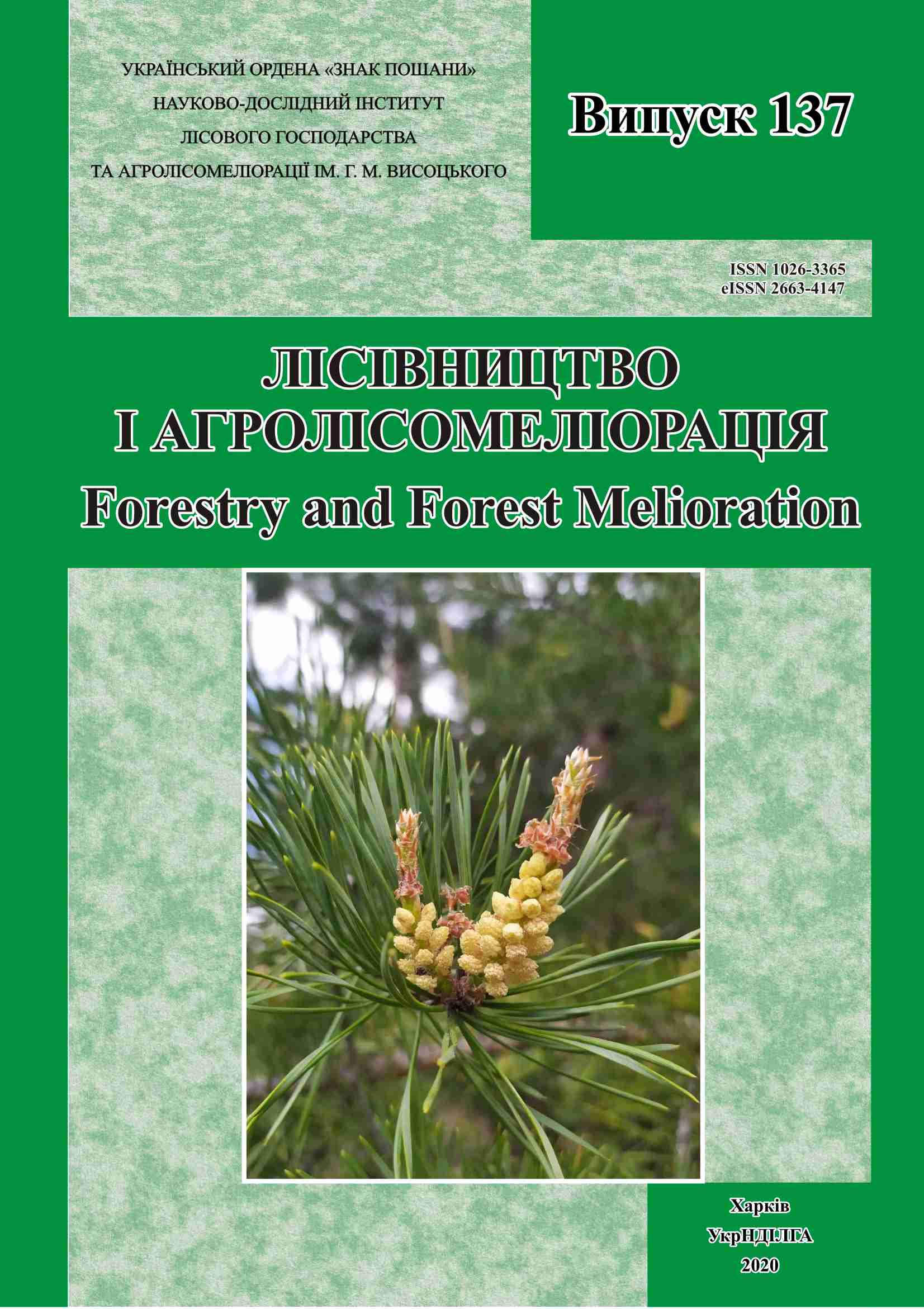Abstract
Іntroduction
English oak (Quercus robur L.) is one of the main forest-forming species that occupies about 28% of the total forest area of Ukraine. It is highly important to study how oak stands adapt to climate change, which is an evolutionarily very long process. However, the climate is changing faster than the tempo of evolutionary reactions. Tree radial growth serves as a bioindicator and reflects the response of the tree to environmental changes in space and time.
Materials and Methods
The study was conducted on four research plots in oak stands of IV and V age classes, growing in conditions of fertile and relatively fertile soils.
The standard dendrochronological methods were used (Bitvinskas 1974, Cook 1990). Tree rings were measured using HENSON digital equipment. The quality of cross-dating was checked using the COFECHA programme. The standardization of tree-ring chronologies was carried out using the ARSTAN programme to remove the age trend. The standardization of a series of ring width allowed analyzing the response of the oak radial growth to climatic factors using the RESPO programme from the DPL software package. The rates of average monthly temperatures and precipitation as the average of the climatic factors for the period 1960–2017 were found. The sliding correlation analysis with a window of 35 years between the RESIDUAL tree-ring chronology and climatic factors of the Kharkiv meteorological station is carried out.
Results
The creation of a general dendrochronological series of English oak, which consists of 4,893 tree rings, is based on 60 individual tree-ring chronologies from four local chronologies.
Negative pointer years for English oak (1962, 1969, 1972–1973, 1975, 1984, 1993, 1999, 2002, 2009, 2012, and 2016) resulted from the cold winters when temperatures were 50–67% lower than the norm or vice versa – from the abnormally warm winters when the excess temperatures reached 58%. Moreover, there were too warm growing seasons, when the excess temperatures made 12–15%. Deficit of precipitation, 20–56% below the norm, and extremely high March temperatures that exceeded the norm by 5–8 times also caused a deep depression of oak radial growth.
During 1960–1988, the negative effect of precipitation in the previous year’s October and the positive effect of precipitation during February and July on radial growth were revealed. For 1989–2017, a significant positive effect of precipitation on the radial growth was recorded only for the previous year’s August. There is a tendency of negative impact of precipitation on growth in February–July in 1989–2017.
Conclusions
During 1989–2017, oak’s sensitivity to temperatures increased compared to 1960–1988 but in the last few years, the negative impact of temperatures during the growing season on the tree rings formation has become somewhat weaker, which may indicate certain adaptation of oak stands to increase of temperature at this stage.
4 Figs., 3 Tables, 22 Refs.
Key words: oak radial growth, pointer negative years, dendroclimatological analysis, climate.

This work is licensed under a Creative Commons Attribution 4.0 International License.
